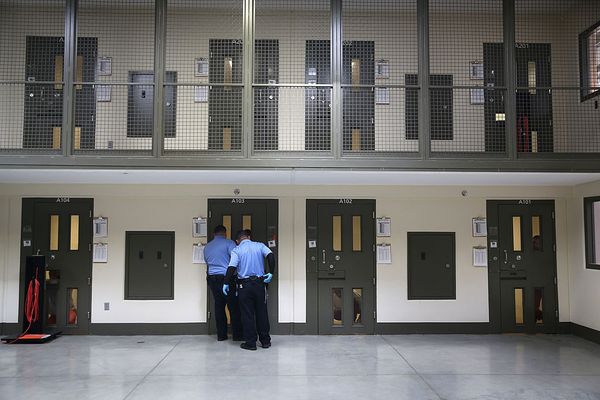Welcome to the Friday, October 28, Brew.
By: Douglas Kronaizl
Here’s what’s in store for you as you start your day:
- Ballotpedia’s analysis of congressional elections finds fewer incumbents, more primary challengers compared to 2020
- Previewing Alaska’s U.S. Senate election
- Florida state senator elected by narrowest margin nationwide in 2020 faces re-election challenge
Ballotpedia’s analysis of congressional elections finds fewer incumbents, more primary challengers compared to 2020
Ballotpedia’s Annual Congressional Competitiveness Report found this year’s congressional elections to be among the most competitive of the past decade.
Much in line with the trends observed in our Annual State Legislative Competitiveness Report, an increase in open seat contests and more primary challenges to incumbents seeking re-election drove an overall rise in competitiveness this year.
At the same time, the number of head-to-head matchups between Democrats and Republicans in general elections decreased this year compared to 2020.
Our study of congressional competitiveness examines three criteria:
- Open seats; those races where no incumbent is running;
- Incumbents in contested primaries; and,
- Seats with major party competition
Incumbents did not seek re-election in 67 of the 469 congressional races this year (14%), guaranteeing those spots to newcomers.
This is up from 45 (10%) in 2020 and 55 (12%) in 2018.
When combined with incumbents defeated in primaries and mid-cycle resignations, we found an overall turnover of 84 members, the highest in a decade, and one driven primarily by an increase in Democrats leaving office.
A majority of these seats (67%) became open when the incumbent resigned or retired. Incumbents seeking a different office accounted for 18 of the open seats. Incumbents dying in office accounted for four open seats.
There were also 16 incumbents—10 Republicans and six Democrats—who lost primaries or nominating conventions. That’s up from eight incumbents who lost in 2020 and three who lost in 2018. Also, U.S. Rep. Jackie Walorski (R-Ind.), who died in August, will also not appear on the general election ballot.
Incumbents who instead ran for re-election faced a greater number of contested primaries this year than at any point in the past decade: 247 incumbent members of Congress had contested primaries this year, a decade high. This is up from 225 in 2020 and 207 in 2018.
The overall number of contested primaries—including those without incumbents—remained about the same as in 2018 and 2020, at 514 compared to 516 and 508.
But the partisan breakdown of those primaries changed.
In 2020, contested Democratic and Republican primaries were about even at 220 for Democrats and 224 for Republicans. This year, there were 256 Republican primaries compared to 187 for Democrats.
The number of seats featuring only Democratic candidates remained the same at 12 this year compared to 2020, meaning the decrease in major party competition came from Democrats contesting 15 fewer seats, effectively guaranteeing them to Republicans.
This is also the first time since 2012 that Republicans have had more uncontested races than Democrats.
Use the link below to read Ballotpedia’s Annual Congressional Competitiveness Report for 2022.
Previewing Alaska’s U.S. Senate election
Next in our preview of battleground elections this year is Alaska’s U.S. Senate election. Click here for our other U.S. Senate battleground coverage.
Incumbent U.S. Sen. Lisa Murkowski (R), Kelly Tshibaka (R), and Patricia Chesbro (D) are running. A fourth candidate, Buzz Kelley (R) advanced from the top-four primary but withdrew and endorsed Tshibaka.
This will be Alaska’s first U.S. Senate election decided using ranked-choice voting, and has been described as a contest between Murkowski and Tshibaka, who received 45% and 39% of the vote, respectively, in the primary. Three election forecasters rate the race as Solid or Safe Republican.
Murkowski, who first assumed office in 2002, has emphasized her experience in office and working relations with other Senators, saying “This race is about who can deliver best for Alaska. Through my seniority and ability to work across party lines, I’m getting real results for Alaska.”
Tshibaka, a former commissioner at the Alaska Department of Administration, said, “Murkowski enabled Biden’s agenda by casting the tie-breaking deciding vote to advance his anti-energy Interior Secretary nominee and confirming over 90% of his radical nominees.”
Murkowski is one of seven Republicans who voted to convict former President Donald Trump (R) during the impeachment proceedings following the breach of the U.S. Capitol on January 6, 2021.
U.S. Senate Minority Leader Mitch McConnell and the other members of Alaska’s congressional delegation—U.S. Sen. Dan Sullivan (R) and U.S. Rep. Mary Peltola (D)—endorsed Murkowski.
Trump and the Republican Party of Alaska endorsed Tshibaka.
Florida state senator elected by narrowest margin nationwide in 2020 faces re-election challenge
Today is the 44th day of our 50 States in 50 Days series, and we’re featuring Florida, the Sunshine State!
Week One: Pennsylvania, Indiana, South Dakota, Nebraska, North DakotaWeek Two: California, Georgia, Texas, MontanaWeek Three: North Carolina, Virginia, New Mexico, Illinois, IdahoWeek Four: Kentucky, Michigan, Arkansas, Minnesota, West VirginiaWeek Five: Vermont, Nevada, Wyoming, Arizona, OhioWeek Six: South Carolina, Iowa, Kansas, Oregon, TennesseeWeek Seven: Colorado, New Jersey, Washington, Alabama, UtahWeek Eight: Mississippi, Maryland, Rhode Island, Oklahoma, MaineWeek Nine: Massachusetts, Wisconsin, Alaska, Hawaii
On the ballot in Florida
Florida voters will elect one U.S. Senate and 28 U.S. Representatives.
Four state executive offices are also up for election: governor/lieutenant governor, attorney general, chief financial officer, and agriculture commissioner.
All 160 state legislative seats—40 in the Senate and 120 in the House—are on the ballot.
At the judicial level, five of the state’s seven supreme court justices must stand for retention this year. Twenty-eight judges across the state’s five appellate court districts will also stand for retention.
We are also covering 24 school board elections as well as municipal elections in Jacksonville and Tallahassee, and county-level elections in Hillsborough, Miami-Dade, Orange, and Pinellas Counties.
Redistricting highlights
The number of U.S. House districts in Florida increased by one from 27 to 28 following the 2020 census.
Congressional and state legislative elections will take place under new district lines following the census. Our side-by-side map comparison tool allows you to compare each district. Here’s an example of what Florida’s congressional map looked like before and after the 2020 census:
You can interact with our map comparison tools by visiting our Wisconsin redistricting page here.
Partisan balance
- Both of Florida’s U.S. Senators—Marco Rubio and Rick Scott—are Republicans.
- Democrats represent nine U.S. House districts and Republicans represent 16. There are two current vacancies.
- Florida has had a Republican governor since 2011, though the state has elected Republican governors since 2018. Former Gov. Charlie Crist, now a Democrat, changed his affiliation from Republican to independent while in office in 2010.
- Republicans hold a 23-16 majority in the Senate and a 76-42 majority in the House.
- With a Republican governor and majorities in both legislative chambers, Florida is one of 23 Republican trifectas, a status it has held since 2011.
- In addition to the governor, Florida has a Republican attorney general and secretary of state, making it one of 23 Republican triplexes.
Seats contested by only one major party
This year, 70 state legislative seats in Florida, or 44% of those up for election, do not have major party competition. When a candidate from only one of either major party runs for a state legislative seat, that party is all but guaranteed to win.
Democrats are running for 111 seats (69%). Forty-nine seats (31%) do not feature a Democratic candidate, meaning Republicans will likely win.
Republicans are running for 139 seats (87%). Twenty-one seats (13%) do not feature a Republican candidate, meaning Democrats will likely win.
Key races
- U.S. Senate: Incumbent Marco Rubio (R) faces U.S. Rep. Val Demings (D) and seven other candidates. In 2016, Rubio won re-election with 52% of the vote. Three election forecasters rate the election as Likely Republican.
- Governor: Incumbent Ron DeSantis (R) faces U.S. Rep. and former Gov. Charlie Crist (D) and two other candidates. DeSantis was first elected in 2018, defeating Andrew Gillum (D) 49.6% to 49.2%. Three election forecasters rate the election as Likely Republican.
- State Senate District 36: Incumbent Ileana Garcia (R) faces Raquel Pachecho (D). Garcia currently represents District 37, where she was first elected in 2020, defeating incumbent Jose Rodriguez (D) 48.52% to 48.51%, a margin of 32 votes. This was the narrowest state legislative margin of victory in 2020.
Ballot measures
There are three measures on the ballot this year:
- Amendment 1 would authorize the state legislature to pass laws prohibiting flood resistance improvements made to a home from being considered when determining a property’s value for tax purposes.
- Amendment 2 would abolish the Florida Constitution Revision Commission, a 37-member group that convenes every 20 years to review and propose changes to the state’s constitution.
- Amendment 3 would authorize the state legislature to provide an additional homestead property tax exemption on $50,000 of assessed value on property owned by certain public service workers including teachers, law enforcement officers, and emergency medical personnel.
All three measures are constitutional amendments, which, in Florida, require 60% of the vote for approval rather than a simple majority of the vote.
Between 1985 and 2020, 131 measures appeared on statewide ballots. Voters approved 101 (77%) and defeated 30 (23%).
Voting
- Polls are open from 7 a.m. to 7 p.m. on Election Day.
- Florida requires photo identification when voting. For more information, click here.
- Early voting is available from Oct. 29 to Nov. 5.
- All voters are eligible to vote by absentee/mail-in ballot. Requests must be made by Oct. 29 and election officials must receive completed ballots no later than Nov. 8.
- The voter registration deadline was Oct. 11.
Want to learn more about the elections you’ll be voting in this year? Click here to use our Sample Ballot Lookup tool!
Learn More






